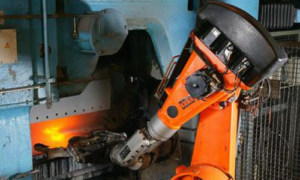At a glance: Georgia Tech researchers have achieved a major milestone by creating the world’s first functional semiconductor from graphene, a single sheet of carbon atoms with incredibly strong bonds. This breakthrough…
Category: Sci – Tech

Welcome to our Sci-Tech category! Here, you’ll find the latest news and analysis on the cutting-edge technology and scientific advancements shaping our world. From artificial intelligence and quantum computing to biotechnology and space exploration, we cover the most exciting and innovative developments in science and technology. Our team of experts provides in-depth coverage and commentary on the most important breakthroughs and the implications they have for society. We also keep you updated on the latest gadgets, products, and tools to help you stay on top of the latest trends. Join us as we explore the world of science and technology and discover how it’s shaping our future.
PHP Editors
Exploring the World of PHP Development: Unveiling the intricacies of PHP, a versatile server-side scripting language pivotal in modern web development. This comprehensive overview delves into PHP’s history, its integration with various databases, and its application in creating dynamic web pages. Accompanied by insights into the best free editors for PHP coding, the article encapsulates the essence of PHP development, catering to both novices and seasoned programmers.
Galaxies Beyond Time: The JWST’s Revolutionary Observations of Early Universe Structures
How old is the universe. New observations suggest it could be 26 billion years old. JWST’s unprecedented observations challenge cosmic models, reshaping our view of early galaxies, black hole formation, and galactic mergers.
Fast Blue Optical Transient
Fast Blue Optical Transients (FBOTs) are brief, luminous events in astrophysics that emit predominantly in blue and ultraviolet wavelengths. Their mysterious nature and differing characteristics from known transients like supernovae make them a subject of ongoing research in stellar evolution and cosmology.
From Teeth to Batteries: Nature-Inspired Method Revolutionizes Fluorochemical Production
Researchers at Oxford have pioneered an innovative new method for producing fluorochemicals sustainably without hazardous HF gas. Their nature-inspired technique activates calcium fluoride via mechanochemistry, mimicking the process that forms our bones and teeth. This creates “fluoromix” which can synthesize over 50 useful fluorochemicals at high yields up to 98%, eliminating the need for toxic HF production. Published in Science, this breakthrough could revolutionize fluorochemical manufacturing globally by enabling dramatically safer and greener chemistry.
ASUS
Asus is a Taiwan-based multinational computer hardware and consumer electronics company that was established in 1989 . The company is dedicated to creating innovative products for both personal and professional use. Asus…
Shell Life Species Not Competitors as They Adjusted to Earth’s Largest Extinction
New research upends long-held ideas about brachiopods and bivalves after the devastating Permian mass extinction. Computational analysis shows both groups declined together, rebounded, and were responding to shared environmental factors – not direct competition. Bivalves adapted better to post-extinction oceans, leading to brachiopod retreat, but didn’t actively displace them as once thought. The study provides fresh perspective on how life rebuilt after the catastrophic end-Permian crisis.
Rewriting the History of Plant Evolution
A pioneering new study upends the long-held idea that plants evolved most of their diversity suddenly early in their history. Instead, research shows key adaptations like seeds, flowers, and roots emerged gradually over time.
Tiny Failed Star Challenges Our Understanding of Stellar Radio Emissions
Astronomers have identified an ultracool brown dwarf star that is the coldest on record to emit radio waves, rattling theories on stellar radio wave generation. This tiny failed star has a temperature below 425°C – cooler than a campfire – yet still produces surprising cyclical radio bursts, suggesting complex magnetic processes.
The Deep Dynamics of Volcanic Eruptions: A CO2 Connection
Cornell University’s groundbreaking research has unveiled a paradigm shift in our understanding of volcanic eruptions, suggesting that carbon dioxide from deep within the Earth, rather than water, drives the activity of certain volcanoes. This revelation underscores the complexity of our planet’s internal dynamics and has significant implications for volcanic hazard preparedness.
